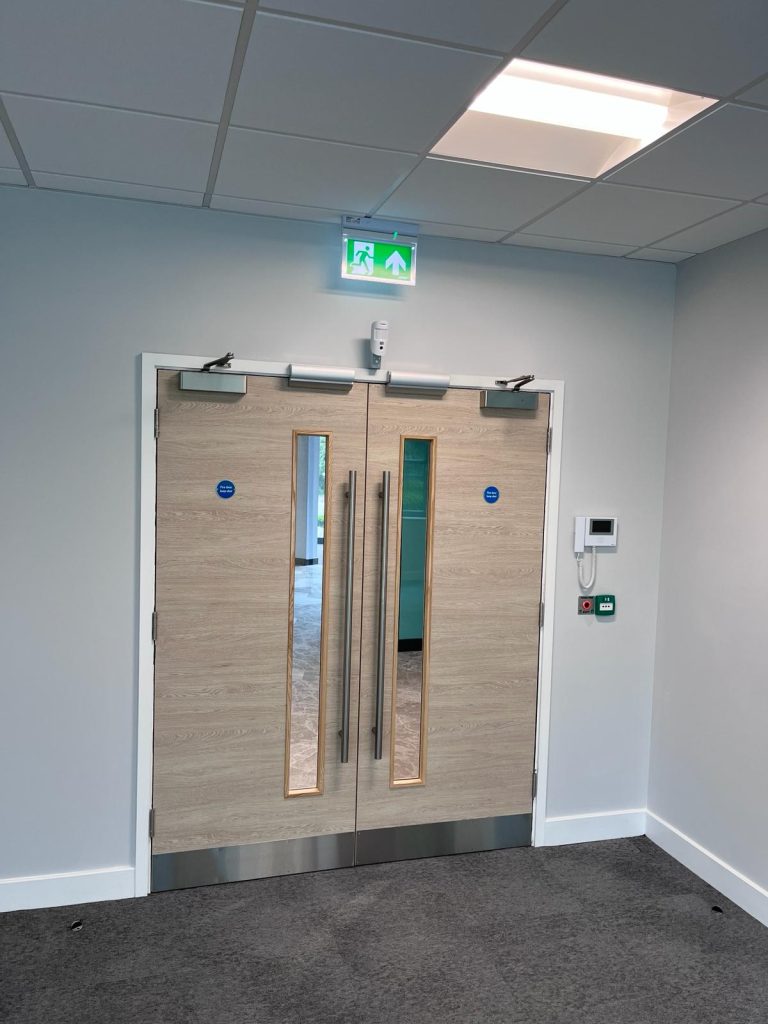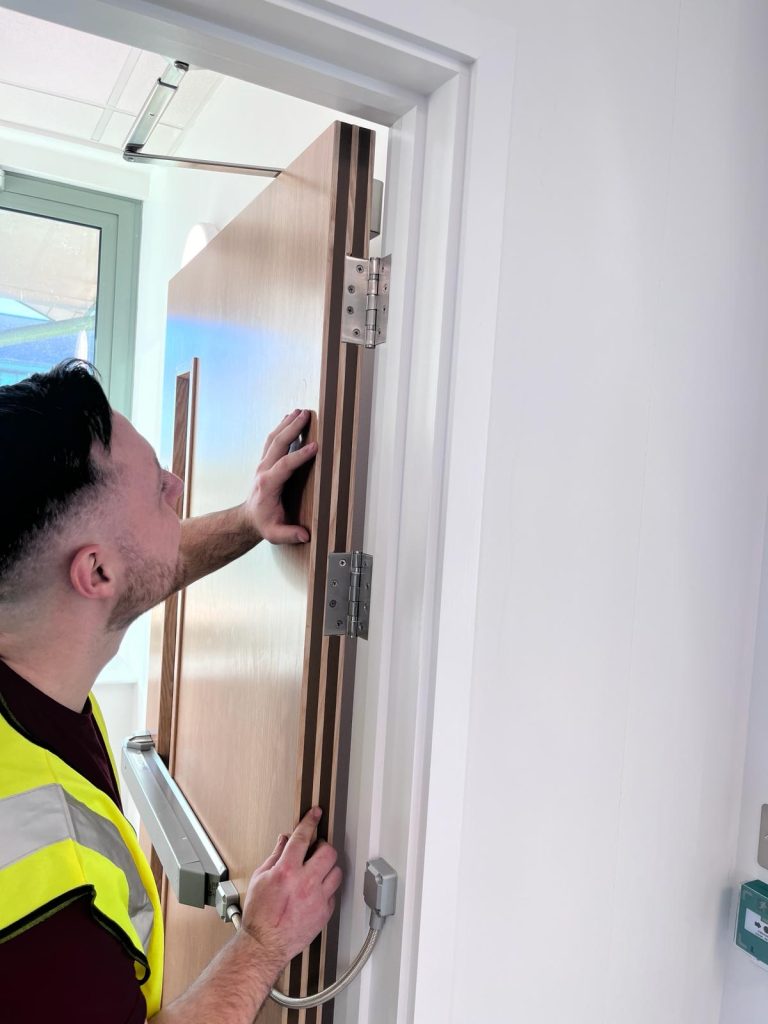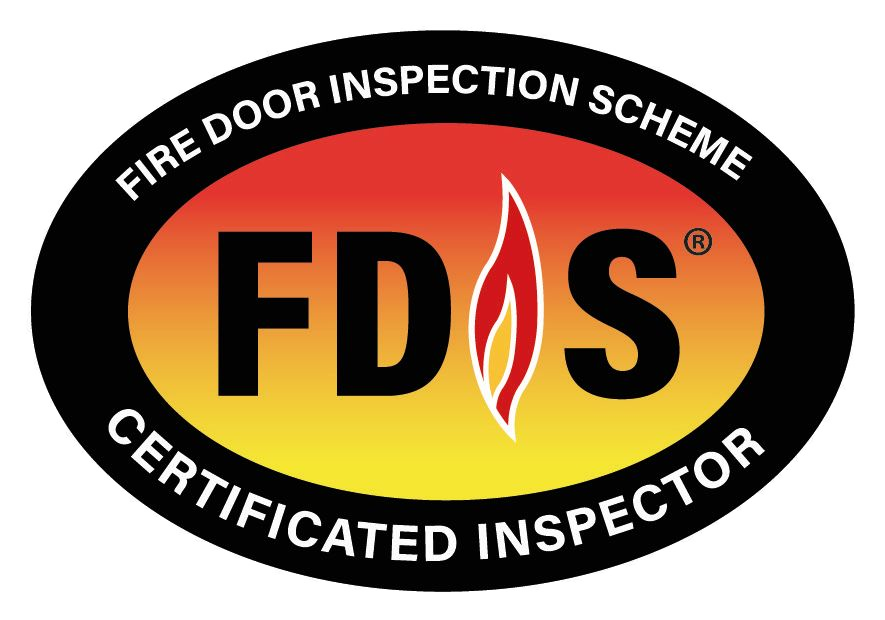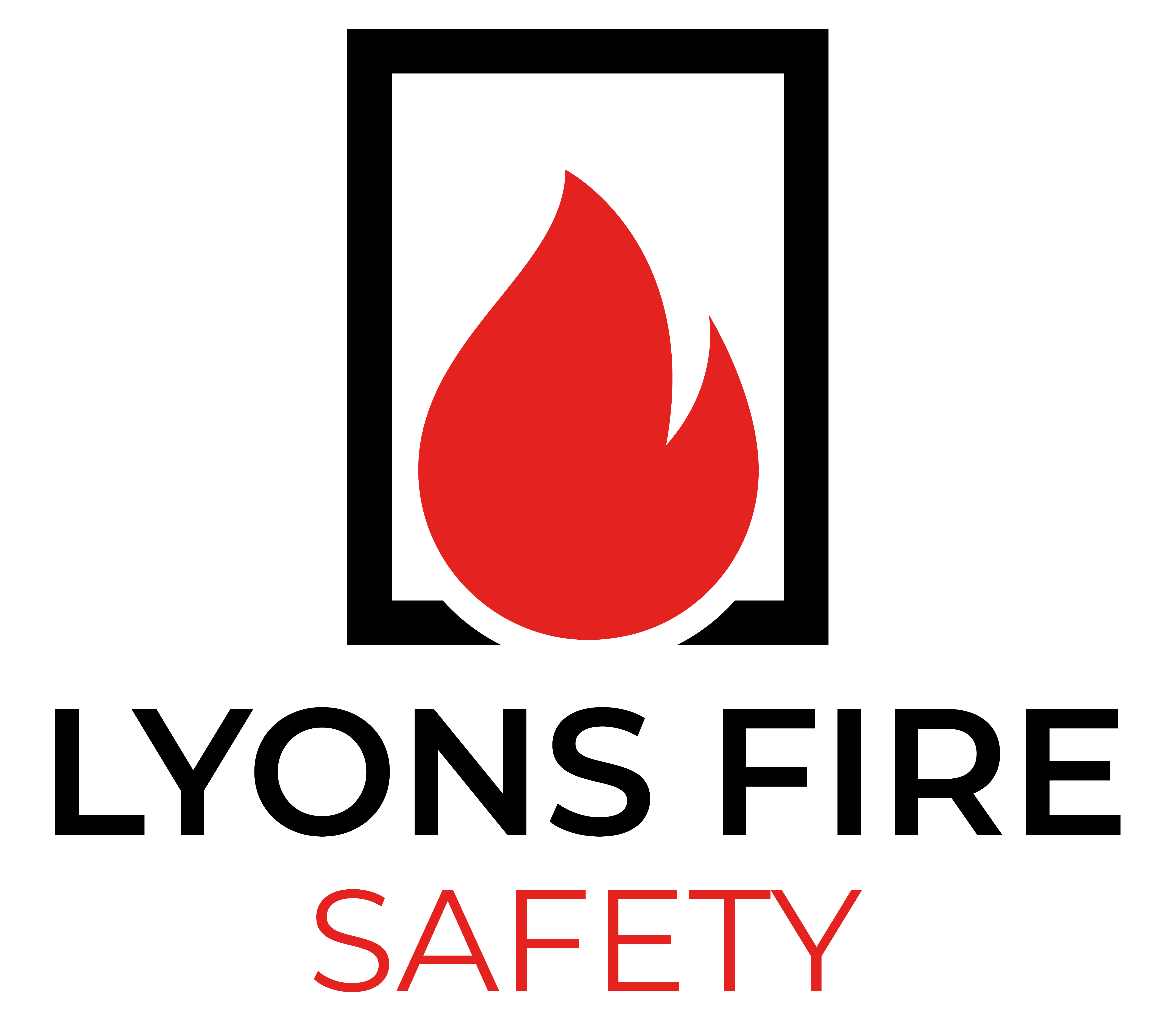Fire Door Performance Testing
At Lyons Fire Safety (LFS), we understand the critical importance of fire doors in protecting lives and property. While we don’t conduct fire door performance tests ourselves, we’re experts in fire door inspection, maintenance, and installation.
Here, in this comprehensive guide, we’ll explore the world of fire door performance testing in the UK, its significance, and how it impacts the safety of buildings across the nation.

What is a Fire Door Performance Test?
Fire door performance testing is a rigorous process designed to ensure that fire doors meet stringent safety standards. In the UK, these tests are primarily conducted according to two main standards:
- BS 476 Part 22
- BS EN 1634 Part 1 (European equivalent)
These tests evaluate how fire doors function during a fire and demonstrate that manufacturers can consistently produce doors that meet required performance standards.
The Fire Door Performance Testing Process
Fire door performance testing involves several key steps:
Full-Scale Testing
- A complete fire door set, including the door leaf, frame, and associated hardware, is installed within a wall assembly. This setup simulates real-world conditions.
- The door is subjected to fire exposure to evaluate its performance under extreme heat.
Exposure to Fire
- During testing, one side of the fire door faces heat conditions that mimic an actual fire. The other side remains in a controlled environment.
- The goal is to assess how well the door withstands heat, smoke, and flames.
Bilateral Testing
- Most fire door sets are not perfectly symmetrical. Therefore, testers evaluate both sides of the door separately.
- This bilateral approach ensures accurate assessment of the door’s performance.
Performance Observation
- Throughout the test, trained observers monitor the door’s stability, structural integrity, and any signs of failure.
- They pay attention to factors like warping, deformation, or gaps.
Duration Measurement
The critical outcome of fire door testing is determining its fire rating. This rating indicates how long the door can resist fire.
- Examples of fire ratings include FD30 (30 minutes) and FD60 (60 minutes).
- The duration measurement directly impacts evacuation time and property protection.
Smoke Control Assessment
- Some fire doors are designed for smoke control in addition to fire containment.
- Doors marked with an ‘S’ suffix (e.g., FD30S) undergo additional testing to evaluate their effectiveness in preventing smoke spread.
Regarding manufacturers, they rigorously follow these testing procedures to ensure their fire doors meet safety standards. Accurate data from these tests, at the manufactures level, guides our team at Lyons Fire Safety.
Additional Evaluations
Beyond fire resistance, UK fire doors often face further tests:
Durability testing – This checks the door’s ability to withstand repeated use over time.
Security testing – Some fire doors, especially entrance doors, may need to meet PAS 24 security standards.
Acoustic performance – For doors that must provide sound insulation alongside fire resistance.

The Importance of Consistent Quality
Passing a fire test isn’t a one-off event. To ensure ongoing quality and performance, many manufacturers opt for third-party certification. This involves:
- Regular audits of the manufacturing process
- Frequent testing of standard products
- Comprehensive documentation of test results and manufacturing procedures
At LFS, we emphasise the importance of using certified fire doors in all our installations and maintenance work.
Why Fire Door Performance Testing Matters
Effective Containment of Fire and Smoke:
- Fire doors are the first line of defence during a fire emergency. Tested doors can withstand heat and prevent flames and smoke from spreading to other areas.
- This containment buys crucial time for evacuation and limits damage.
Valuable Evacuation Time:
- Well-tested fire doors allow occupants to safely exit the building. Every second counts during an emergency, and functional fire doors provide essential evacuation pathways.
- Regular testing ensures these doors remain reliable.
Protection of Critical Infrastructure:
- Fire doors safeguard critical areas such as stairwells, electrical rooms, and escape routes. Their performance directly impacts the safety of people and property.
- Testing helps identify weaknesses and ensures correct functioning.
Compliance with UK Fire Safety Regulations:
- The UK has stringent fire safety regulations. Regular performance testing ensures that buildings meet legal requirements.
- Compliance contributes to overall safety and peace of mind.
Remember, fire door testing isn’t just a formality—it’s a vital aspect of building safety.
The Impact on Fire Door Installation and Maintenance
While LFS doesn’t conduct these tests, understanding the testing process at the manufactures level informs our approach to fire door installation and maintenance:
- We ensure all fire doors we install meet current testing standards.
- Our inspections check that doors maintain their tested condition.
- We advise against modifications that could nullify a door’s certification.
- Our maintenance procedures aim to preserve the door’s tested performance.

Common Issues in Fire Door Performance
Even well-tested fire doors can fail if not installed correctly, or maintained. Common problems include:
Excessive Gaps between the Door and Frame:
Fire doors are designed to create a barrier against smoke and flames. However, if there are gaps between the door and its frame, smoke and heat can easily pass through.
- Causes: Poor installation, settling of the building, or wear and tear over time.
- Solutions: Adjust the door, replace worn seals, or install smoke seals to close the gaps.
Damaged or Missing Intumescent Seals:
Intumescent seals are crucial components of fire doors. They expand when exposed to heat, creating a seal that prevents smoke and flames from spreading.
- Causes: Wear, damage, or improper maintenance.
- Solutions: Regularly inspect and replace damaged seals. Ensure they are intact and functional.
Improper Hardware Installation:
Fire doors rely on specific hardware (hinges, closers, locks) to function correctly. Incorrect installation can compromise their effectiveness.
- Causes: Inadequate installation, loose screws, or incompatible hardware.
- Solutions: Install and maintain hardware components. Check for any loose parts.
Unauthorized Modifications:
Alterations to fire doors, even seemingly minor ones, can significantly impact their performance.
Examples: Drilling holes, removing seals, or changing hardware.
Solutions: Educate building occupants about the importance of not modifying fire doors. Regular inspections can catch unauthorized changes.
Remember, maintaining fire doors is crucial for safety. Regular inspections, repairs, and adherence to safety guidelines ensure that fire doors perform as intended during emergencies. That’s why you should get in contact with us at LFS, for professional action and advice.
For a more detailed look at common issues & problems with fire doors – take a look at our recent blog page.
Fire Door Performance Testing - FAQs
How often should fire doors be tested for performance?
While individual doors aren’t repeatedly tested, manufacturers should undergo regular audits and testing to maintain certification.
Can I modify a fire door after it's been tested?
Any modifications can potentially affect a fire door’s performance and nullify its certification. Always consult with a professional.
What's the difference between FD30 and FD60 fire doors?
FD30 doors are rated to resist fire for 30 minutes, while FD60 doors are rated for 60 minutes. Take a look at our page here – Fire Door Ratings Explained – to get a clear understanding on the different rating, and qualifications, of each type of fire door.
Are all fire doors in the UK required to undergo performance testing?
Yes, all fire door designs should be tested to BS 476 Part 22 or BS EN 1634 Part 1.
How can I tell if a fire door has passed performance testing?
Look for third-party certification labels or ask the manufacturer for test certificates.
What role does smoke play in fire door testing?
Doors with an ‘S’ suffix (e.g., FD30S) are tested for smoke control in addition to fire resistance.
How do acoustic requirements impact fire door testing?
Some fire doors are tested for both fire resistance and sound insulation, ensuring they meet multiple performance criteria.
Choose Lyons Fire Safety for Your Fire Door Needs
At Lyons Fire Safety, we’re committed to ensuring your fire doors provide optimal protection. While we don’t perform fire door tests, our expert team understands the intricacies of fire door performance and how to maintain it.
Don’t compromise on fire safety. Contact us today to schedule an assessment, consultation, or maintenance service for your fire doors. Our specialists will identify any issues, provide recommendations, and implement effective solutions to ensure your building’s fire protection is robust and compliant with UK regulations.
Phone: 0121 517 0562
Email: david@lyonsfiresafety.co.uk
Lyons Fire Safety: Your Trusted Partner for Fire Door Installation, Maintenance, and Compliance Solutions in the UK.


